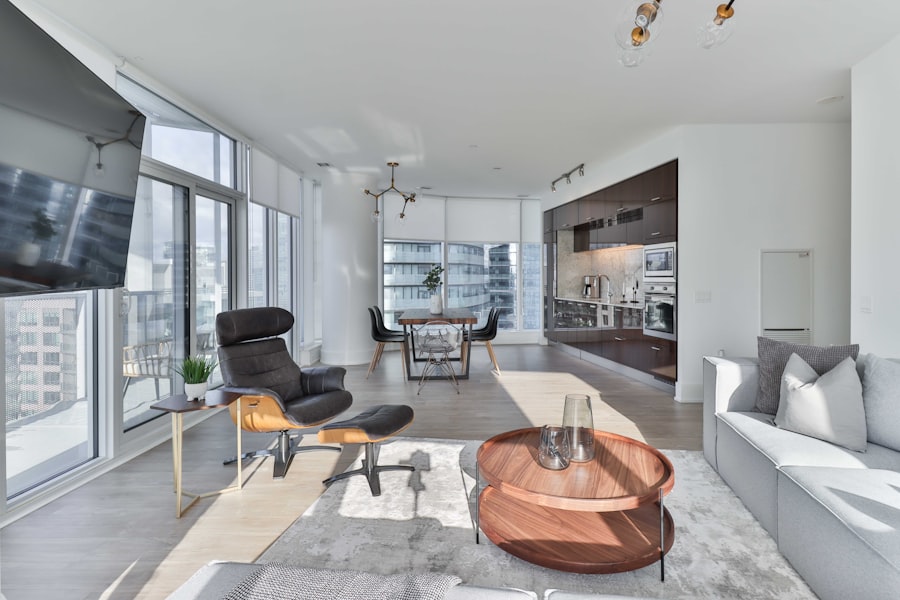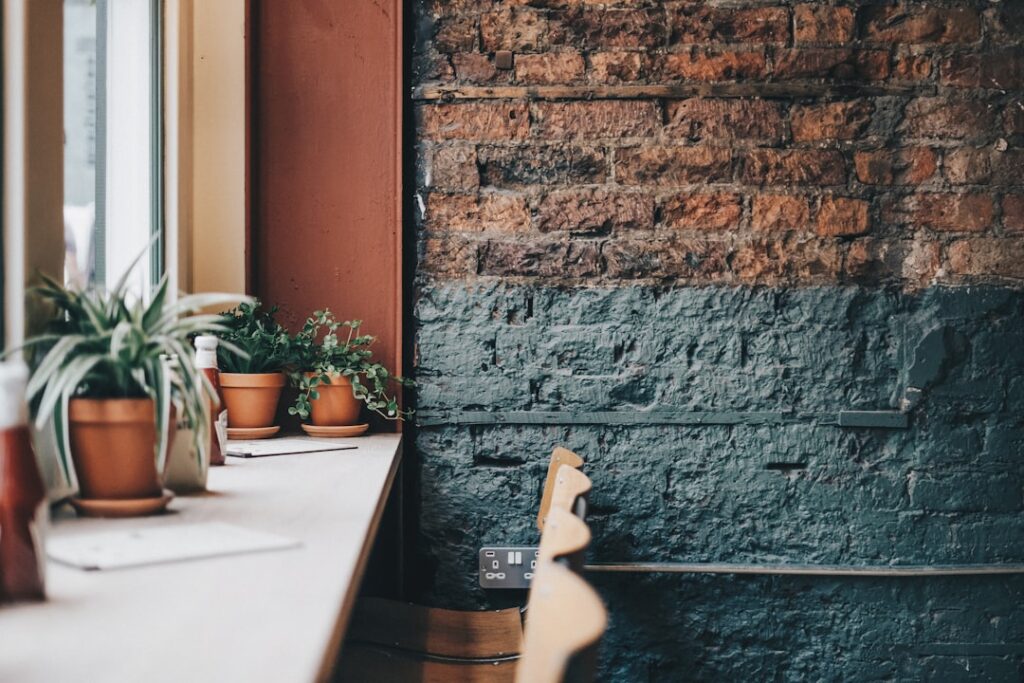Before embarking on any design project, it is crucial to understand the specific function of the room in question. Each space serves a unique purpose, whether it be a living room designed for relaxation and socializing, a home office intended for productivity, or a bedroom that promotes rest and rejuvenation. Assessing the needs of the room involves not only identifying its primary function but also considering how it will be used on a daily basis.
For instance, a family room may need to accommodate both entertainment and casual gatherings, which could influence the choice of furniture and layout. In addition to function, it is essential to evaluate the room’s dimensions and architectural features. This includes noting the size of windows, doors, and any built-in elements such as shelves or fireplaces.
Understanding these physical characteristics can help in making informed decisions about furniture placement and design elements. For example, a room with large windows may benefit from lighter colors and airy fabrics to enhance natural light, while a smaller space might require multi-functional furniture to maximize usability without feeling cramped. By thoroughly assessing both the function and physical attributes of the room, one can create a design that is not only aesthetically pleasing but also practical and tailored to specific needs.
Key Takeaways
- Understand the function and needs of your space before designing
- Choose a color palette that creates the desired mood and atmosphere
- Maximize space and functionality with strategic furniture arrangement
- Enhance ambiance and function with thoughtful lighting design
- Create visual interest and depth by adding textures and patterns
- Infuse your personality into the design to make the space your own
- Create a clean and functional space by organizing and decluttering
- Bring the outdoors in by incorporating greenery and natural elements
Choosing the Right Color Palette: Creating a Mood and Atmosphere
Warm Colors: Inviting and Energetic
Warm colors, such as reds and oranges, can create an inviting and energetic environment, making them perfect for social spaces like dining rooms or living areas. These colors stimulate emotions and promote social interaction, making them ideal for areas where people gather.
Cool Colors: Calming and Soothing
On the other hand, cooler colors like blues and greens tend to promote calmness and tranquility, making them suitable for bedrooms or meditation spaces. These colors have a calming effect on the mind and body, creating a peaceful atmosphere.
Creating Harmony with a Cohesive Color Scheme
A well-chosen color scheme can create a sense of harmony and flow throughout the house. One effective approach is to select a dominant color for each room and incorporate complementary or analogous colors in accents such as throw pillows, artwork, or decorative items. This method enhances visual interest while allowing for personal expression within a unified design aesthetic. By thoughtfully choosing a color palette that aligns with both emotional intent and stylistic preferences, one can significantly enhance the overall ambiance of a space.
Furniture Arrangement: Maximizing Space and Functionality

The arrangement of furniture is a critical aspect of interior design that directly impacts both functionality and aesthetics. A well-thought-out layout can make a room feel more spacious and inviting while ensuring that it meets the needs of its occupants. When arranging furniture, it is essential to consider traffic flow; pathways should be clear and unobstructed to facilitate movement throughout the space.
For example, in a living room, seating should be arranged in a way that encourages conversation while allowing easy access to other areas of the home. Moreover, furniture arrangement should take into account the scale and proportion of each piece in relation to the room’s dimensions. Oversized furniture in a small space can create a sense of clutter, while too many small pieces can make a larger room feel disjointed.
Utilizing multi-functional furniture—such as ottomans that double as storage or coffee tables with built-in shelves—can also enhance both space efficiency and functionality. By strategically arranging furniture with an eye toward flow, scale, and purpose, one can create an environment that is both practical and visually appealing.
Lighting Design: Enhancing Ambiance and Function
Lighting is often an overlooked element in interior design, yet it has the power to transform a space dramatically. Effective lighting design involves layering different types of lighting—ambient, task, and accent—to create a well-balanced environment that serves various functions. Ambient lighting provides overall illumination, while task lighting focuses on specific areas where activities such as reading or cooking take place.
Accent lighting can highlight artwork or architectural features, adding depth and interest to the room. When planning lighting for a space, it is important to consider both natural light sources and artificial options. Maximizing natural light through window treatments that allow for flexibility—such as sheer curtains or adjustable blinds—can enhance the overall brightness of a room during the day.
In contrast, artificial lighting should be adjustable to accommodate different moods and activities throughout the day. Dimmers are an excellent addition to any lighting scheme, allowing for customization based on time of day or occasion. By thoughtfully integrating various lighting elements, one can create an inviting atmosphere that enhances both functionality and aesthetic appeal.
Adding Textures and Patterns: Creating Visual Interest and Depth
Incorporating textures and patterns into interior design adds layers of visual interest that can elevate a space from ordinary to extraordinary. Textures can be introduced through various materials such as fabrics, woods, metals, and ceramics. For instance, pairing soft textiles like velvet or linen with harder surfaces like glass or wood creates a dynamic contrast that invites touch and engagement.
Similarly, mixing different textures—such as a plush area rug with sleek leather furniture—can add depth and warmth to a room. Patterns also play an essential role in creating visual intrigue. They can be introduced through wallpaper, upholstery, or decorative accessories like cushions and throws.
When using patterns, it is important to strike a balance; too many competing patterns can overwhelm a space while too few may render it flat. A common approach is to select one bold pattern as a focal point—such as an accent wall with wallpaper—and complement it with more subdued patterns in smaller accessories. This method allows for creativity while maintaining cohesion within the overall design scheme.
By thoughtfully integrating textures and patterns, one can create an engaging environment that captivates the senses.
Incorporating Personal Style: Infusing Your Personality into the Design

Expressing Individuality Through Decor
Displaying these items prominently allows for storytelling within the space while adding character. In addition to decorative items, personal style can also be expressed through color choices, furniture selections, and overall themes. For example, someone with a penchant for vintage aesthetics might incorporate retro furniture pieces alongside modern accents for an eclectic look.
Curating a Personalized Space
Alternatively, minimalists may prefer clean lines and neutral palettes that emphasize simplicity and functionality. The key is to curate elements that resonate personally while ensuring they harmonize with the overall design vision.
Creating Meaningful Spaces
By embracing personal style within interior design, one can create spaces that are not only beautiful but also deeply meaningful.
Designing with Intention
This approach to design encourages individuals to thoughtfully consider the items and styles they incorporate into their space, resulting in a unique and personalized environment that reflects their personality and tastes.
Organizing and Decluttering: Creating a Clean and Functional Space
A well-organized space is essential for both functionality and aesthetic appeal. Clutter can detract from the beauty of a room while also making it difficult to navigate daily activities effectively. To create a clean environment, it is important to establish systems for organization that suit individual lifestyles.
This may involve investing in storage solutions such as baskets, bins, or shelving units that keep items neatly contained while remaining accessible. Decluttering is another vital aspect of maintaining an organized space. Regularly assessing belongings and determining what is truly necessary can help eliminate excess items that contribute to chaos.
The “one in, one out” rule—whereby one new item is brought into the home only if another is removed—can be an effective strategy for preventing clutter from accumulating over time. Additionally, creating designated spaces for frequently used items ensures they are easily retrievable when needed. By prioritizing organization and decluttering practices, one can cultivate an environment that feels serene and functional.
Incorporating Greenery and Natural Elements: Bringing the Outdoors In
Integrating greenery and natural elements into interior design has become increasingly popular due to their numerous benefits for both aesthetics and well-being. Plants not only enhance visual appeal but also improve air quality and promote feelings of tranquility within a space. When selecting plants for indoor environments, it is important to consider factors such as light availability, maintenance requirements, and size relative to the space.
In addition to live plants, natural materials such as wood, stone, or bamboo can be incorporated into furniture or decor to create an organic feel within the home. For example, wooden dining tables or stone countertops add warmth and texture while connecting indoor spaces with nature. Furthermore, using natural light sources—such as large windows or skylights—can enhance this connection by allowing sunlight to flood into living areas throughout the day.
By thoughtfully incorporating greenery and natural elements into interior design, one can create spaces that are not only visually stunning but also promote health and well-being.
If you are interested in interior designing rooms, you may also want to check out this article on creating ergonomic workstations. This article provides valuable insights on how to design workspaces that prioritize comfort and efficiency. By incorporating ergonomic principles into your room design, you can create a space that promotes productivity and well-being.
FAQs
What is interior designing?
Interior designing is the art and science of enhancing the interior of a space to achieve a healthier and more aesthetically pleasing environment for the people using the space.
What does an interior designer do?
An interior designer is responsible for planning, researching, coordinating, and managing interior design projects. They work with clients to determine their needs and create functional and aesthetically pleasing designs for the space.
What are the key elements of interior designing a room?
Key elements of interior designing a room include space planning, color coordination, furniture selection, lighting, and accessorizing. These elements work together to create a cohesive and visually appealing space.
What are the benefits of hiring an interior designer?
Hiring an interior designer can save time and money, as they have the expertise to make informed decisions and avoid costly mistakes. They also have access to resources and contacts that can help bring a design vision to life.
How can I find the right interior designer for my project?
To find the right interior designer for your project, it’s important to research and interview potential candidates. Look at their portfolio, check their credentials, and discuss your project goals and budget to ensure a good fit.
What are some popular interior design styles for rooms?
Some popular interior design styles for rooms include modern, traditional, contemporary, minimalist, industrial, and Scandinavian. Each style has its own unique characteristics and can be tailored to suit individual preferences.


